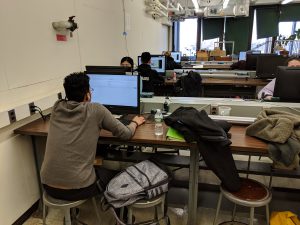
The COVID-19 pandemic has led to an all-time increase in remote learning for both students and workers. From all indications, it is here to stay. The question to ponder on is if people are really paying attention during these online meetings. Jens Madsen and Lucas C. Parra, researchers from City College of New York, illustrated how eye tracking could be used to calculate how much attention is being given online using standard web cameras, not requiring the transfer of any data from people’s computers. In a paper titled ‘Synchronized eye movements predict test scores in online video education’ published in the Proceedings of the National Academy of Sciences, they demonstrated that just by observing the eyes of students, they can predict how well the students may perform on quizzes based on educational videos.
‘Experienced teachers pay close attention to their students, adjusting their teaching when students seem lost. This dynamic interaction is missing in online education’, said Madsen. ‘But in our study, we proposed to measure attention to online videos remotely by tracking eye movements and hypothesized that attentive students follow videos similarly with their eyes’.
The CCNY team was able to illustrate that inter-subject correlation of eye-movements during educational video presentations is considerably higher for attentive students, and that synchronized eye movement are predictive of individual test scores on the material presented in the video.
‘These findings replicate for videos in a variety of production styles, learning scenarios and for recall and comprehension questions alike’, Parra observed. ‘We were able to reproduce the results using standard web cameras to capture eye-movements in a classroom setting, and with over 1,000 participants at home, without the need to transmit user data’.
The results they acquired suggest that online education can adapt to the level of attention given to a student in real-time. ‘The internet has turned attention into a commodity. With video content increasing online, remote sensing of attention to video at scale may have applications beyond education, including entertainment, advertising or politics. The applications are limitless.’
By Marvellous Iwendi
Source: CCNY